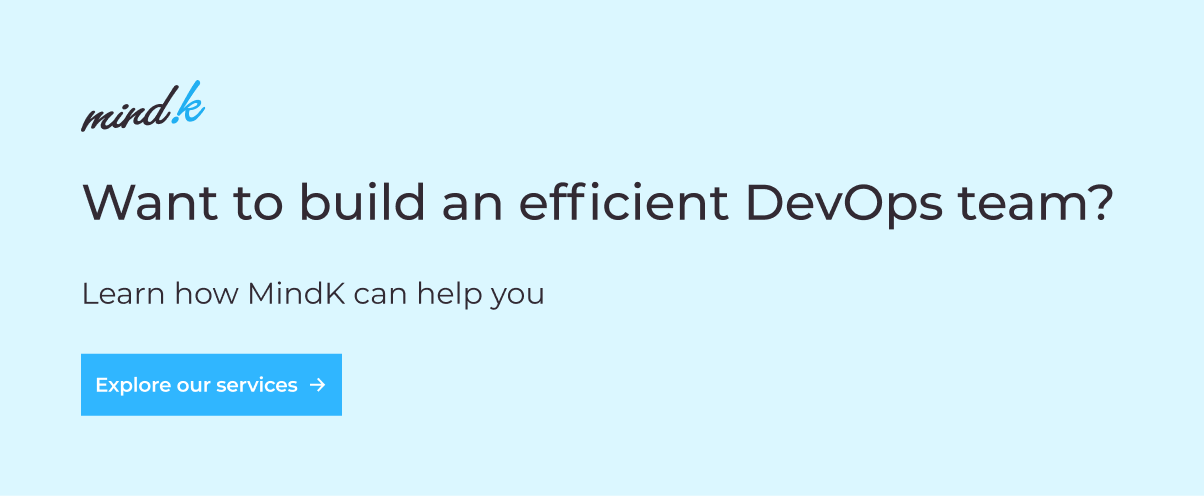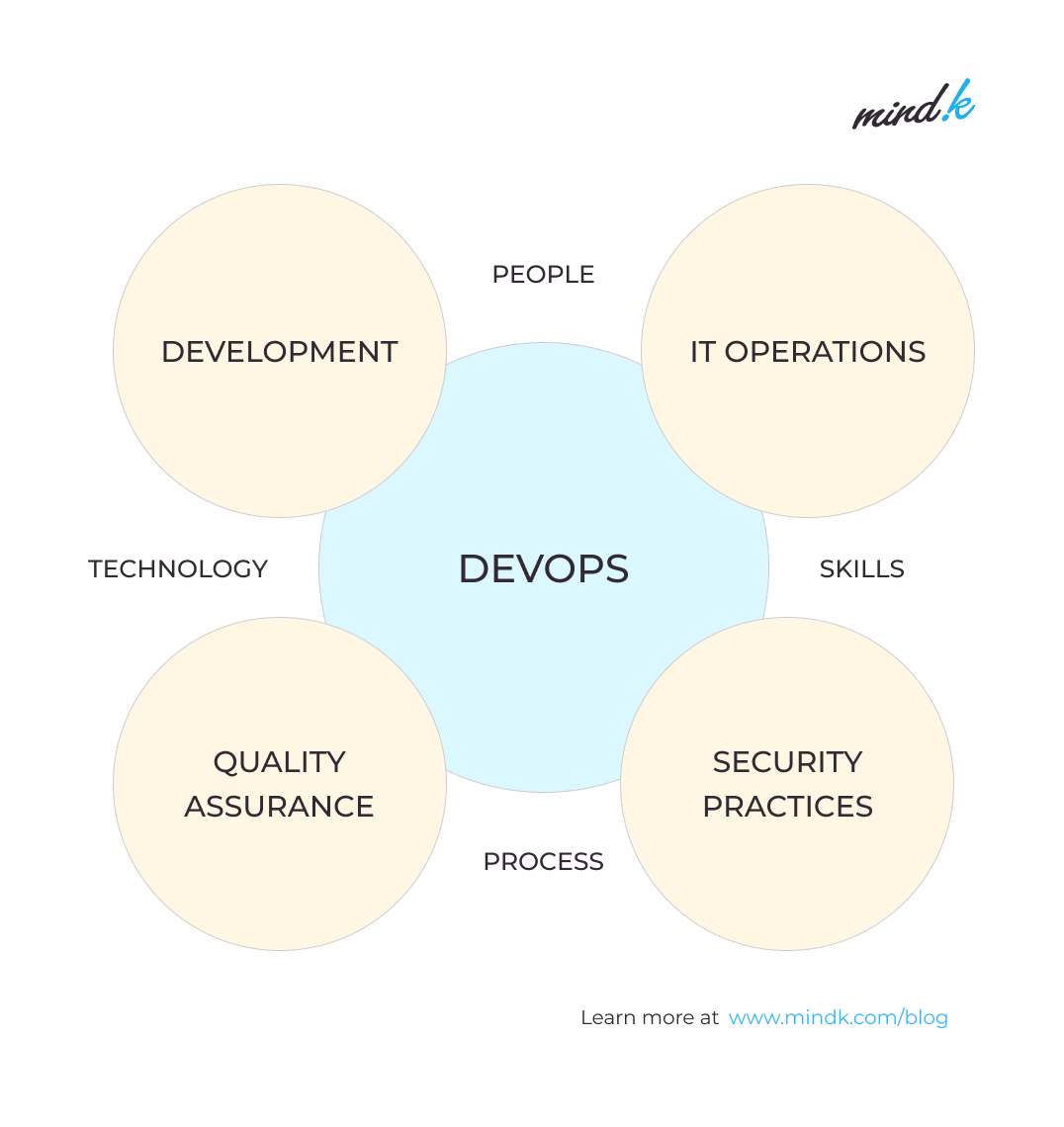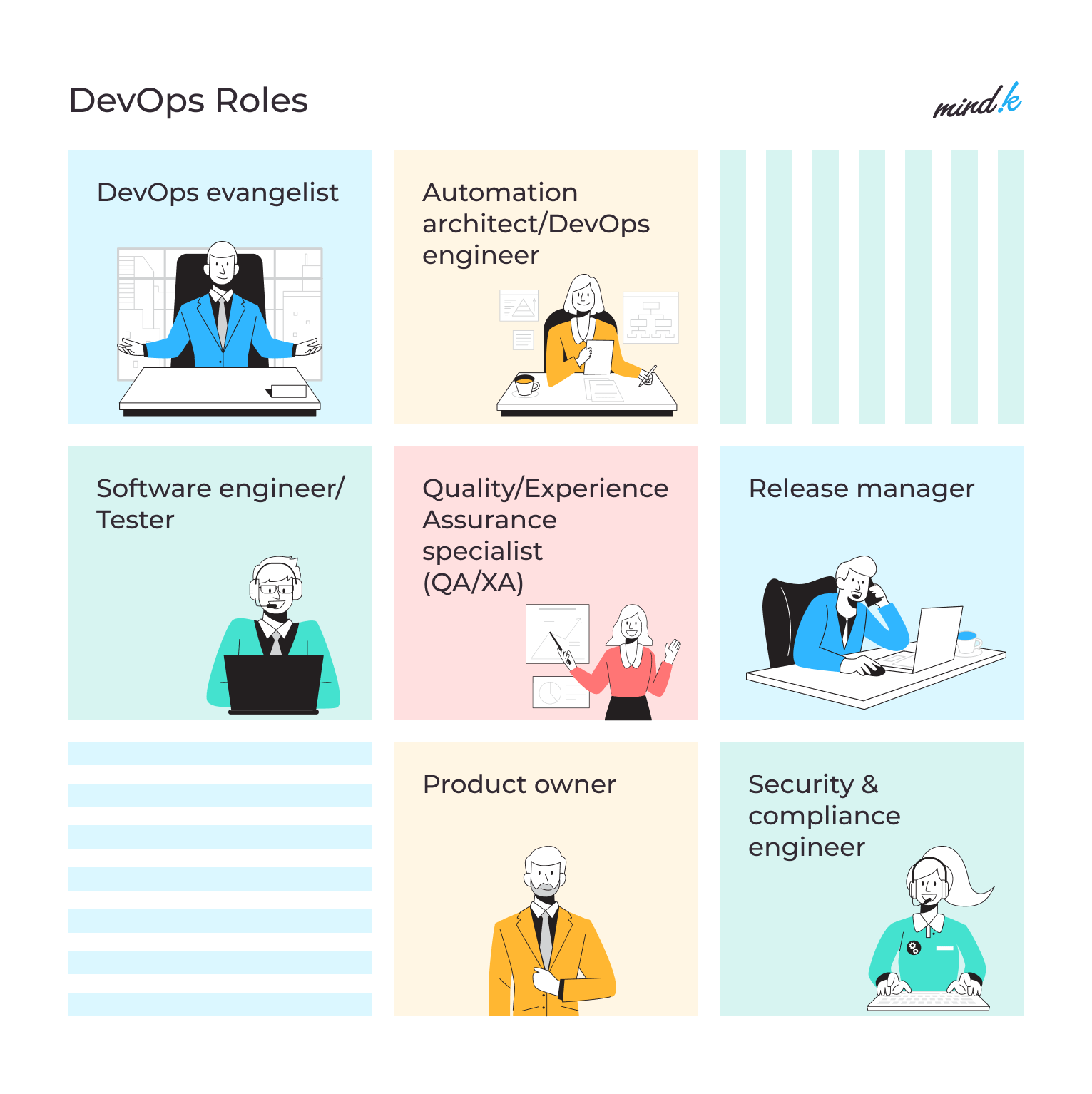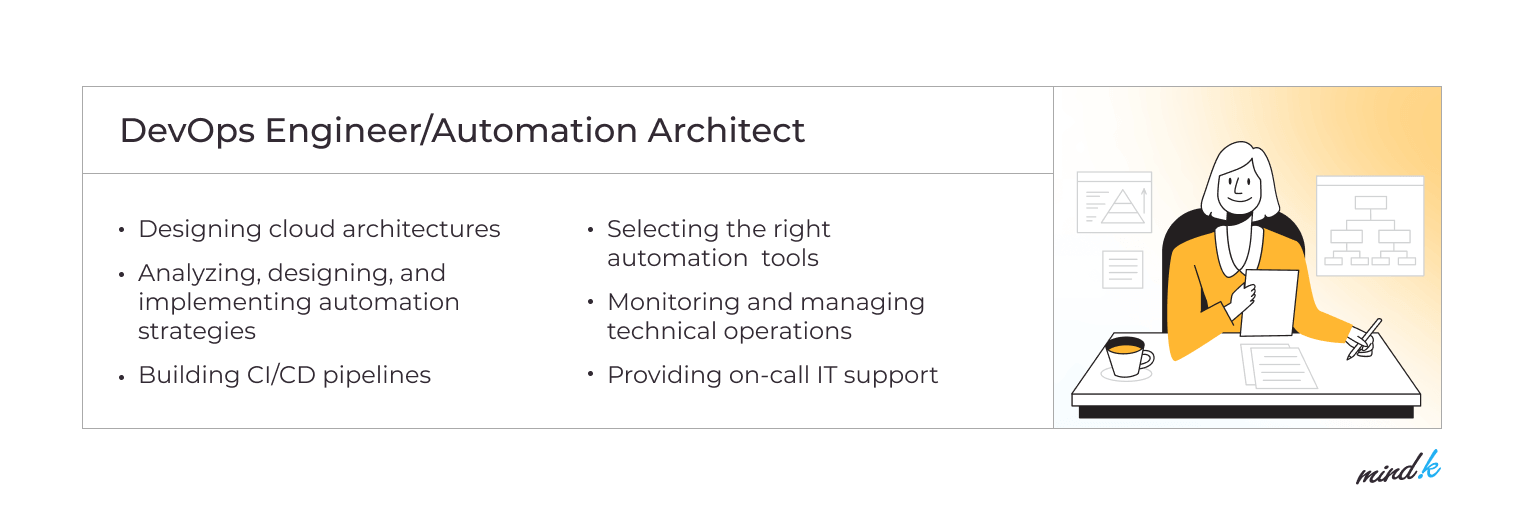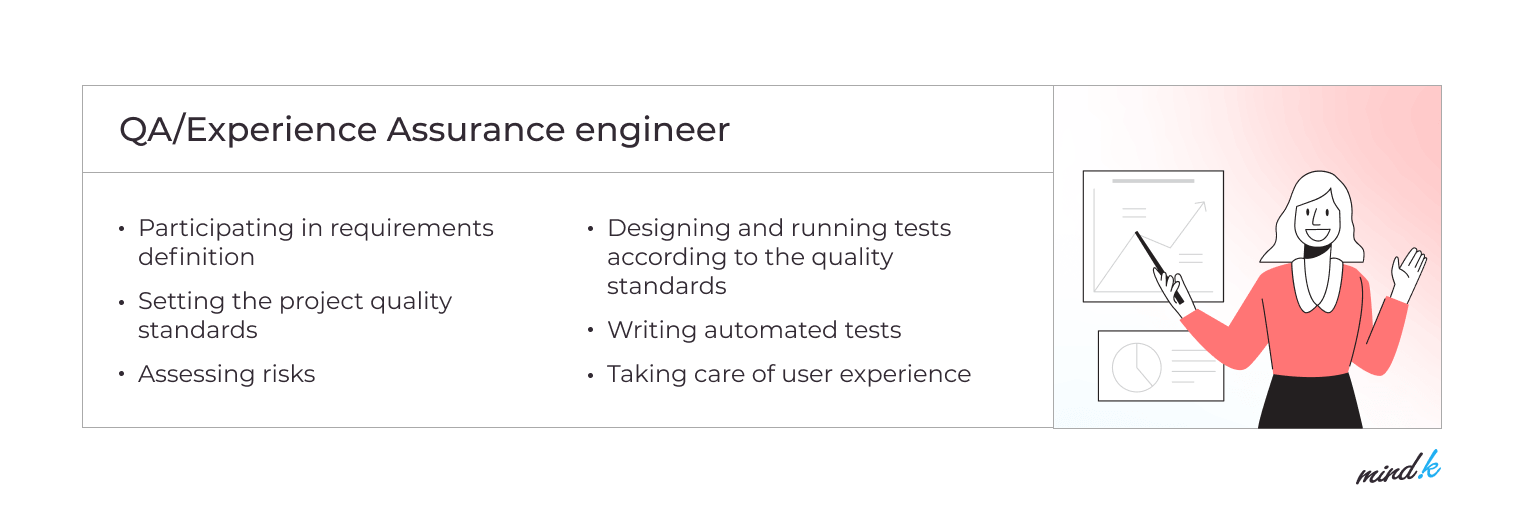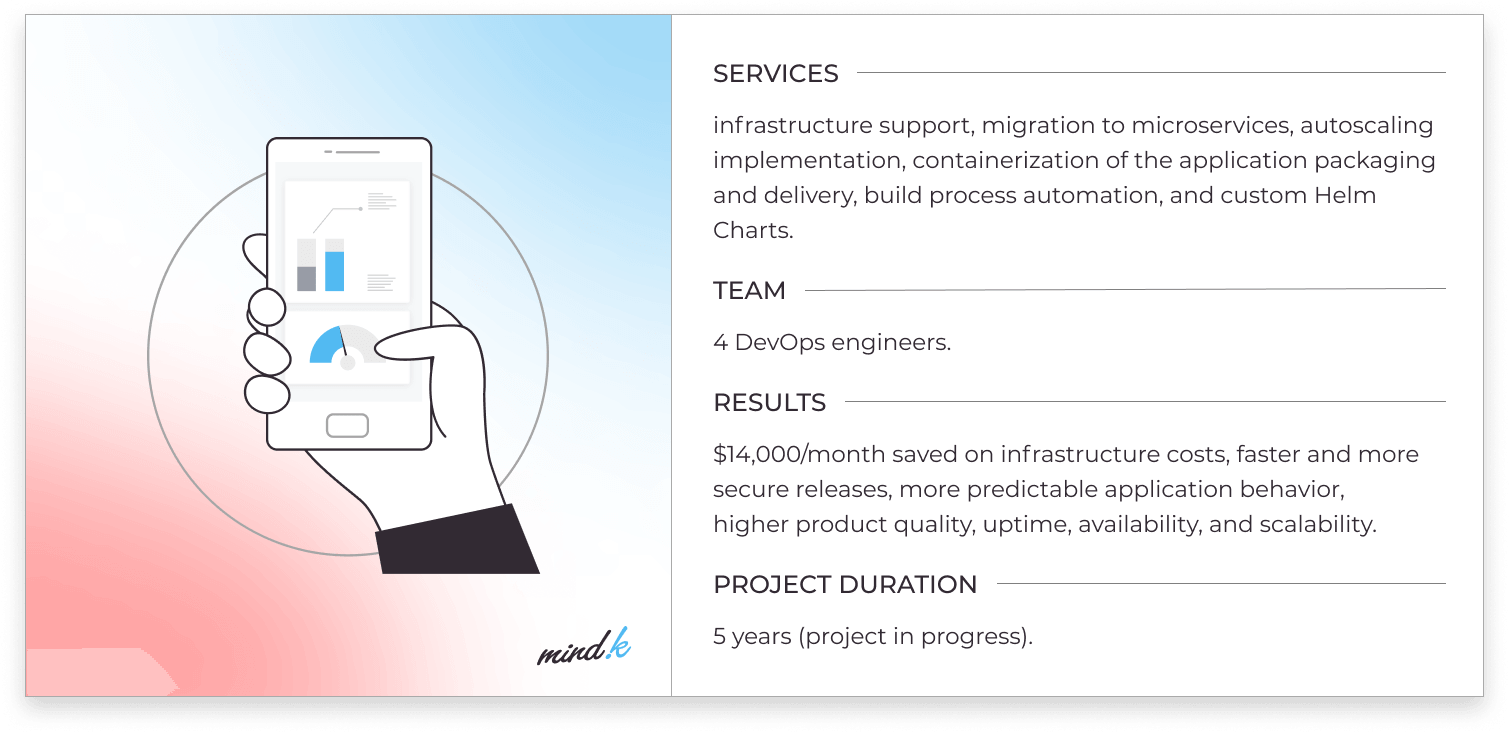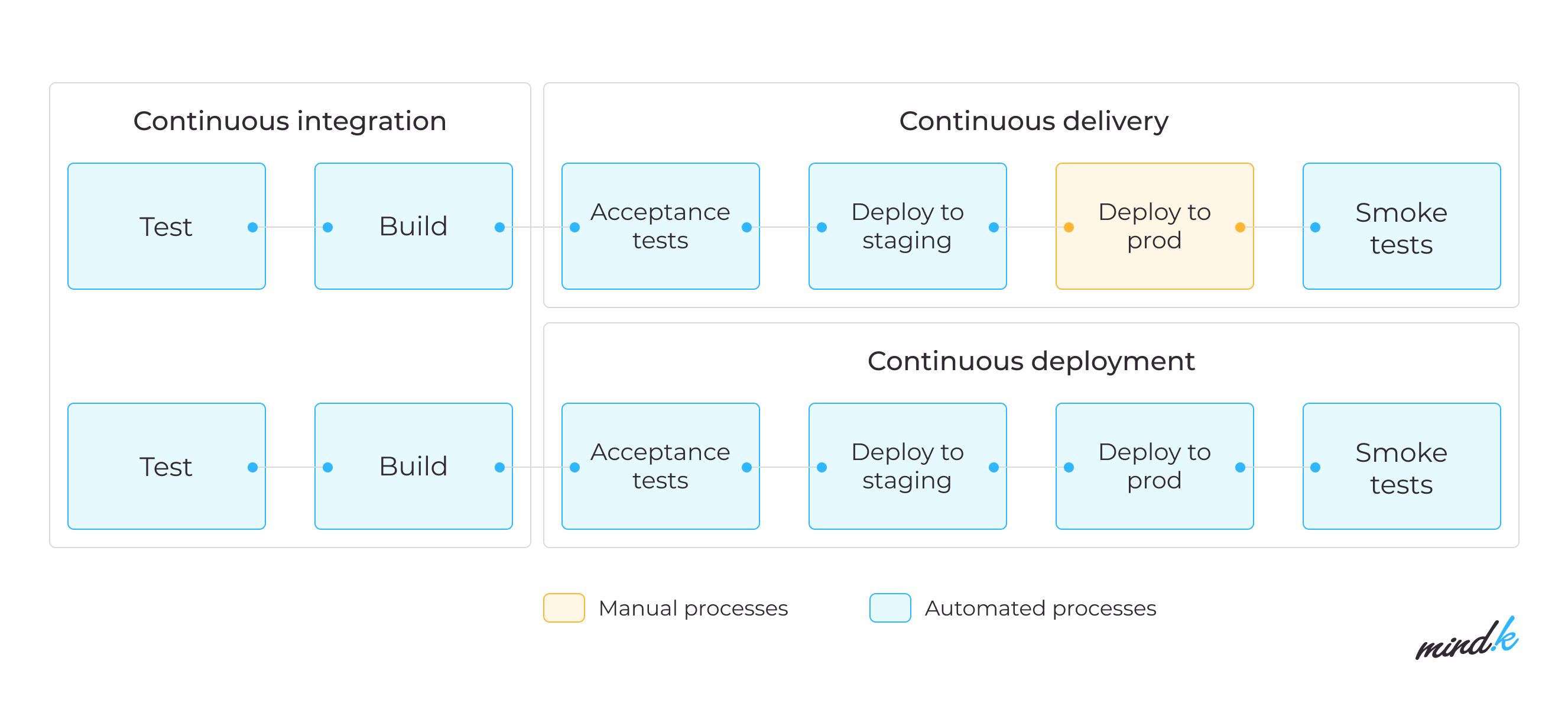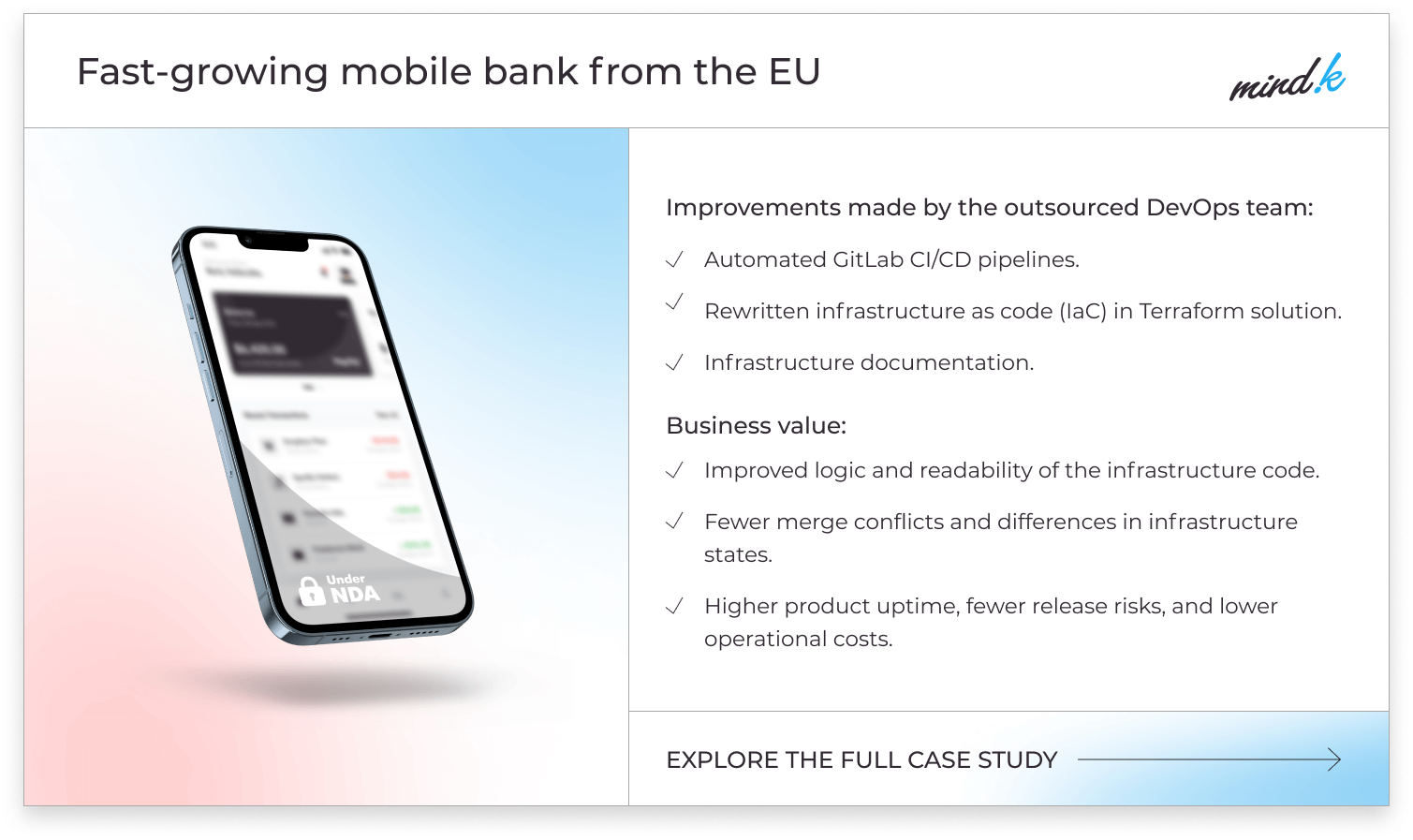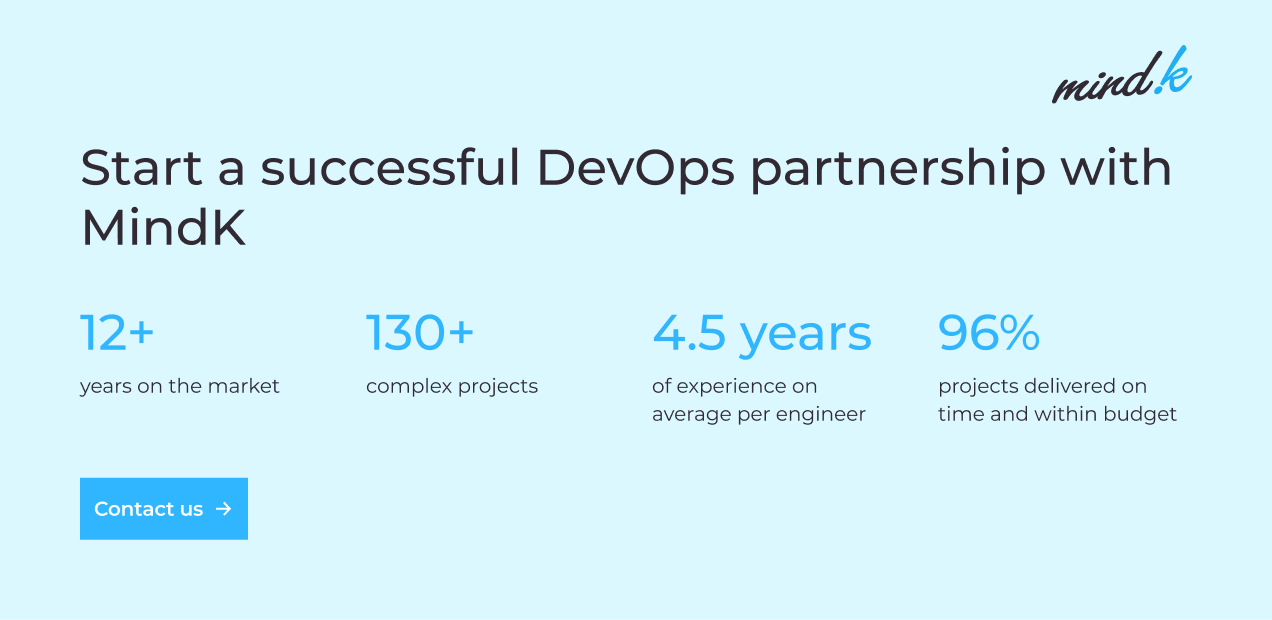To achieve 100% efficiency, you need to clearly define DevOps roles and responsibilities for every team member. At MindK, DevOps has been the cornerstone of every project since 2015. The benefits were striking — from lower operational costs to on-demand deployments and higher quality. This article will detail the key DevOps roles we used on successful projects and provide some practical advice on how to implement the approach for your business.
What is DevOps?
DevOps is a strategy that bridges the gap between IT Operations, Quality Assurance, and Development. Before it was introduced, each team worked in isolated silos on their own set of tasks, which caused serious bottlenecks and slowed the development process.
DevOps uses a set of tools and best practices to create a more collaborative environment. This results in Developers and Operations thinking together how certain features would behave during the production. Defects are a shared responsibility. This means less time spent on escalations and more – on improving the product itself. By focusing on heavy automation, DevOps allows faster innovation, shorter feedback cycles, and higher team efficiency.
Over time, DevOps grew from a competitive advantage for companies like Amazon and Netflix to a factor that determines whether you’ll survive the competition of tomorrow.
Typical DevOps team roles
Having a DevOps team doesn’t necessarily mean all of its members are DevOps engineers. Companies are now favoring small, cross-functional teams that have all the capabilities you need to build a well-functioning product.
As such, here’s a typical DevOps team structure you can see in high-performing companies:
DevOps Evangelist
Leadership plays a key part in a successful DevOps transformation. A DevOps evangelist is your biggest advocate of the DevOps philosophy. This role is all about promoting its advantages inside your company. Evangelists are mainly responsible for securing buy-in from stakeholders, removing organizational barriers, and forming your DevOps team.
According to a study by Google, psychological safety is the number 1 characteristic of successful teams. The goal of a DevOps evangelist is to create a culture where it’s safe to fail and learn from failure. Such a person is a role model and a trusted mentor for their teammates, driving change throughout the whole organization.
As such, this role requires both technical expertise, leadership skills, and a deep understanding of your business processes.
Automation Architect/DevOps Engineer
Automation is critical for DevOps. Depending on your project size, this role might be called Integration specialist, CloudOps architect, or simply a DevOps engineer. Regardless of naming, this role is all about finding optimization opportunities to support the rapid development cycle.
Our DevOps engineers get involved in the project when planning Sprints (a two-week period of work, aimed at producing a working feature). They help define the project requirements, set up the right KPIs, and select the best toolset for the team.
Their main duties include deployment and maintenance of project infrastructure, setting up the Continuous Integration & Deployment (CI/CD) pipelines, migrating to the cloud, introducing best automation practices and tools, monitoring all technical operations, and providing on-call IT support.
Software Engineer/Tester
DevOps is all about bridging the gaps between teams. As such, most of the DevOps team roles come with additional responsibilities. Our developers, for example, embrace some of the duties traditionally associated with QA engineers.
Following DevOps practices, developers create new features, but also test, deploy, and monitor them in production. As a result, developers remain involved during the whole product lifecycle instead of throwing issues to other teams.
The most senior engineer on the development team usually holds the role of a team lead. They allocate tasks between the team members, review the code they produce and implement the most technically complex features.
Quality/Experience Assurance Specialist (QA/XA)
As developers are now actively testing software, QA professionals now have additional responsibilities. Their main duty includes setting the quality standards for the project and design tests according to these standards.
With higher development speed, it becomes harder for the QA team to test all new features within a Sprint. At this point, it’s often impossible to maintain high product quality without automated testing.
As you implement DevOps practices, it becomes easy to get obsessed with automation and other technical facets, forgetting that your main objective is to delight customers. Ensuring a great User Experience is, therefore, another key duty for a QA engineer in a DevOps team.
Release Manager
This role is similar to a project manager in a traditional IT team. They are responsible for planning the whole project, managing the daily activities of your team using Agile methodologies, and mitigating risks. Unlike traditional managers, release managers in DevOps also get involved in the more technical aspects, such as product development, integration, testing, and deployment.
Product Owner (PO)
A Product Owner is a manager that connects customers and the DevOps team. Depending on your project, a PO can be somebody who knows your business and its customers, or a representative from an outsourcing company.
The main responsibility of a PO is communicating with stakeholders to define a coherent vision for the product. Based on this vision, they create a high-level product roadmap, prioritize features on the team’s backlog, and evaluate the team’s progress. They continue to work with customers to get a better idea of user needs and deliver more value with each new product release.
Security & Compliance Engineer (SCE)
Modern applications often have glaring security holes. The reason is simple – teams responsible for security treated it as an afterthought. However, putting off security issues until the very end of the project can cost you thousands of dollars.
That’s why DevOps teams try to incorporate the best security practices right from the start. On smaller projects, we often have this role combined with a DevOps engineer.
Large teams can have dedicated Security & Compliance Engineers, who collaborate with developers to make sure their code and infrastructure are built securely. They typically stay involved during the whole product lifecycle to ensure security and regulatory compliance.
Core DevOps responsibilities
DevOps teams are focused on delivering value to customers in the form of working code and a perfect end-product. Developers, QA, and Operations are all centered around the core automation capabilities that many companies are lacking at the moment. That’s why one of the most popular services at MindK is providing experienced specialists to take care of those key DevOps team responsibilities.
Spreading the DevOps culture
DevOps is not just a set of tools or best practices. It’s a philosophy, often impossible to adopt using a bottom-up approach. DevOps engineers should help the company dissolve organizational silos, coordinate stakeholders, and adopt the best DevOps practices at an organization level.
Cloud architecture
In the past, applications used to have monolithic architecture. This approach is good for stability, but any changes affect the entire system, which makes scaling a complex task.
In our case, this became apparent when working on a SaaS membership management system for our Norwegian partners. The application serves dozens of communities and business associations that all have different needs and organizational structures. To provide greater flexibility, our team decided to migrate the project from the LAMP stack to a microservice architecture.
The approach involves building larger applications from smaller, loosely connected components. You can deploy or change these services independently, while the rest of the application remains usable. With microservices, you can scale up your application in small increments while maintaining high reliability and availability. Together with Kubernetes and infrastructure as code, microservices can save you a ton of money on maintenance and time for developing new features.
Migrating to microservices for a leading reputation management company in the US [read the case study]
Cloud migration
Most applications today are developed using cloud technologies. Still, cloud migration remains one of the main DevOps responsibilities.
One of our clients – a leading recruiting agency from Western Europe – had a 12-year old Application Tracking System (ATS) hosted from a private data center. This prevented the company from realizing the full DevOps benefits, including auto-scaling, high availability, and fault tolerance.
That’s why our engineers decided to rebuild the entire application from the ground up using Hetzner cloud hosting. Cloud migration works at three levels:
- Infrastructure-level: DevOps engineers architecture the new cloud-based infrastructure.
- Application-level: the team moves the app to the cloud, starting with the simplest functions.
- Data-level: DevOps specialists migrate application data to cloud storage.
Cloud migration allows you to optimize operational costs and implement other DevOps best practices such as CI/CD, monitoring, and infrastructure as code (which we’ll discuss later in the article).
CI/CD pipelines
Without Continuous Integration/Deployment, developers have to waste a ton of time on manual actions.
A CI/CD pipeline consists of 3 levels:
- Level 1 – Continuous Integration (CI), which automates the build and test process, allowing multiple developers to integrate code into a shared repository. It removes manual tasks and reduces integration conflicts to provide smoother cooperation.
- Level 2 – Continuous Delivery (CD), which automates the deployment of code, allowing companies to release new features more often and cut the time-to-market.
- Level 3 – Continuous Deployment adds automated deployment on top of Continuous Delivery. Manual intervention is only needed when your code doesn’t pass an automated test. As a result, you can deploy code hundreds of times per day, responding to feedback almost instantly.
From our team experience, automated CI/CD pipelines reduce the development time significantly and speed up innovation.
Infrastructure as code (IaC)
In the past, IT admins had to manually configure servers and deploy apps. This costs hundreds of man-hours on infrastructure maintenance. Cloud migration solves a part of these problems. Yet, managing infrastructure remains a challenge, especially with multiple teams working on the same project.
This is where infrastructure as code comes into play. It allows you to describe infrastructure using a high-level configuration language. This code is then stored in human-readable configuration files. Developers can easily adjust these files, copy, and reuse them to provision any infrastructure you need. IaC uses version controls, monitoring tools, and virtualization to manage operations the same way developers manage product releases.
We tested this approach while working for one of the leading reputation management services in the US. Infrastructure as code in the Terraform solution made our operations much more efficient. When you make any changes to the config files, the solution automatically generates complex change plans you can apply to infrastructure with minimum effort.
By using the same configurations for each deployment, IaC eliminates human errors. Scaling is now easier than ever. Storing all operations in config files simplifies tracing and auditing, which means simpler compliance. But most importantly, IaC saves your resources by automating provisioning, administration, and management work.
Monitoring
Real-time monitoring allows you to react quickly to user feedback. As DevOps speeds up software engineering, testers need to keep pace using QA automation. And test automation requires continuous monitoring.
With the help of DevOps, you can go beyond monitoring your production environments to proactive monitoring of your whole application stack. If monitoring becomes a part of the DevOps routine, it gets much simpler to track relevant KPIs. Monitoring makes deployments more effective and promotes cooperation between the Development and Operations teams.
How to build an effective DevOps team
Establish cross-functional teams
One of the first things you can do to benefit from DevOps practices is to form small cross-functional teams that work towards a common objective. An Agile DevOps team structure can consist of software engineers, QA experts, UI/UX designers, security, and IT specialists, who all share the same goals and responsibilities throughout the development lifecycle.
Recruit the specialists you lack
In the last couple of years, the demand for experienced DevOps engineers has surged across the US. A cursory search on LinkedIn shows over 75K DevOps vacancies. The same site lists just 71K actual DevOps engineers (a good portion of whom already have a well-paid job).
This makes it increasingly difficult to hire a qualified DevOps specialist and contributes to rising wages. That’s why many companies now look into DevOps outsourcing as a way to alleviate this shortage. Product development companies like MindK have well-established DevOps departments that can help you acheive a successful DevOps transformation.
Retain valuable professionals
High-performing DevOps teams work like a well-oiled machine. That’s why losing even a single key member can have a drastic effect on the performance of your entire team.
Recruiting, training, and onboarding a DevOps specialist can be very expensive. So it makes more sense to invest in retention programs. You can identify potential DevOps candidates within your company and gradually educate them for a new role. This can save you costs and promote knowledge sharing within your organization.
While DevOps is all about building the right team, do not overlook individual needs. Providing your engineers with interesting projects, motivating, educating, and compensating them fairly will result in creating a high-performing DevOps team.
Conclusion
DevOps plays a crucial role in modern product development. Its benefits range from faster release cycles to higher quality and security. Bridging the gap between Operations and Development results in better team collaboration and overall productivity.
Now that you understand DevOps roles and responsibilities, you can start building a high-performing DevOps team. Qualified engineers are a scarce resource, so DevOps outsourcing becomes an attractive option for many companies.
If you find it hard to recruit qualified engineers locally, MindK can become your trusted provider of DevOps services. Since 2015, DevOps has been an integral part of 130+ projects we made for clients from all over the world, so don’t hesitate to message us if you need some help. Just fill the contact form and we’ll arrange a free consultation with our experts.


